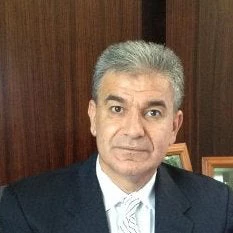 This month marks the midpoint of the transition process in Yemen. The peace agreement brokered by the Gulf Cooperation Council was signed in November 2011, but the actual implementation of the process began with the election in February last year of Abd Rabbo Mansoor Hadi as president of the Republic of Yemen, and head of the Government of National Reconciliation. As agreed upon in the peace initiative, the transition will include a national dialogue that brings together a broad geographic and political cross section of the country, the drafting of a new constitution, and concluding with new parliamentary and presidential elections. The two year transition is due to be completed in February, 2014.
This month marks the midpoint of the transition process in Yemen. The peace agreement brokered by the Gulf Cooperation Council was signed in November 2011, but the actual implementation of the process began with the election in February last year of Abd Rabbo Mansoor Hadi as president of the Republic of Yemen, and head of the Government of National Reconciliation. As agreed upon in the peace initiative, the transition will include a national dialogue that brings together a broad geographic and political cross section of the country, the drafting of a new constitution, and concluding with new parliamentary and presidential elections. The two year transition is due to be completed in February, 2014.
The formal transition process has three important political, security and economic components.Much has been said about the progress on the political and security fronts. I want to focus today on economic developments. The picture at this stage is mixed. There is good news, and not quite as good news.
Let me start with the good news. First, at the macro level, things are stabilizing. The Central Bank of Yemen reported an increase in foreign currency reserves to US$6.2 billion, from a low of around US$3.7 billion that was reached at the height of the crisis. This is partly the result of a US$1 billion deposit made by Saudi Arabia,but also due to improved management by the Central Bank. The currency is stable at around 215 Riyals to the US Dollar. Inflation is also under control. The International Monetary Fund expects a growth rate of around 4.4 percent this year, compared to a mere 0.5 percent last year and a contraction of around 19 percent in 2011, the year of the political crisis. Finally, the Central Bank recently reduced interest rates to 15 percent. While this is still high, it is much lower than the 22 percent of only six months ago.
Donor and government funded projects are now progressing. Almost all donors have now returned to the capital, Sana’a and a large number of contracts are currently being awarded. The projects being launched are not focused on the capital alone, but in cities and villages throughout Yemen. Roads are being repaired, schools are being built, streets are being cleaned, airports are being constructed, and a major tunnel project on the road from Sana’a to Hudeida is under bidding. Soon the government will start building the expressway that will connect Aden toTaiz. There are many other projects at the design and bidding stage.
Not only have donors returned to Sana’a and projects come back to life, but an additional US$7.5 billion was pledged to Yemen at conferences last year in Riyadh and New York. These new funds will finance priority projects over the next three years. There have been extensive discussions between the government and donors as to which specific projects the new pledges will finance, and some of the promised funds have already started arriving. On February 14 th, the World Bank Board of Directors approved a number of grants to Yemen totaling US$206 million, the first installment of a pledge of US$400 million in additional support. Other donors are also moving to fulfill their commitments. Saudi Arabia has already reached an agreement with the government on the allocation of most of their pledge of US$3.25 billion.
Now for the news that is not quite as good. First, not all donors are delivering on their pledges. While Saudi Arabia has moved quickly by depositing US$1 billion with the Central Bank and aligning most of its promised funding with specific projects, some countries have neither delivered on their pledges, nor started the conversation with the government on the destination of the funds.
Second, while things are improving, both at the macro level and with the pace of government and donor financed projects, overall economic activity, especially as it relates to the private sector, has not improved enough to make a difference in either the jobless rate or poverty levels. More than 50 percent of Yemenis are still under the poverty line. Food insecurity is still very high, and high malnutrition levels, especially among children persist.
Lastly, the government has not made progress in the implementation of their commitments made with donors at last year’s conference, and formalized with the signing of the Mutual Accountability Framework (MAF). It has taken the government almost five months to agree on the establishment of the Fast Track Mechanism, a critical agency that will ensure the rapid absorption of donor funds and their distribution to earmarked projects. It will probably be a few more months yet before it is fully operational. Neither has there been significant progress on key policy actions itemized in the MAF. These include measures to improve governance and promote anticorruption, reforms to the power sector and the business environment, and the building of partnerships with Civil Society and Private Sector.
Where do we go from here? The government needs to accelerate the establishment of the Fast Track Executive Bureau and launch serious efforts to implement the commitments made at the donor conference in Riyadh, or their credibility will suffer. The donors in return need to deliver on their pledges, and deliver quickly. There is no time to waste on either side.


Join the Conversation